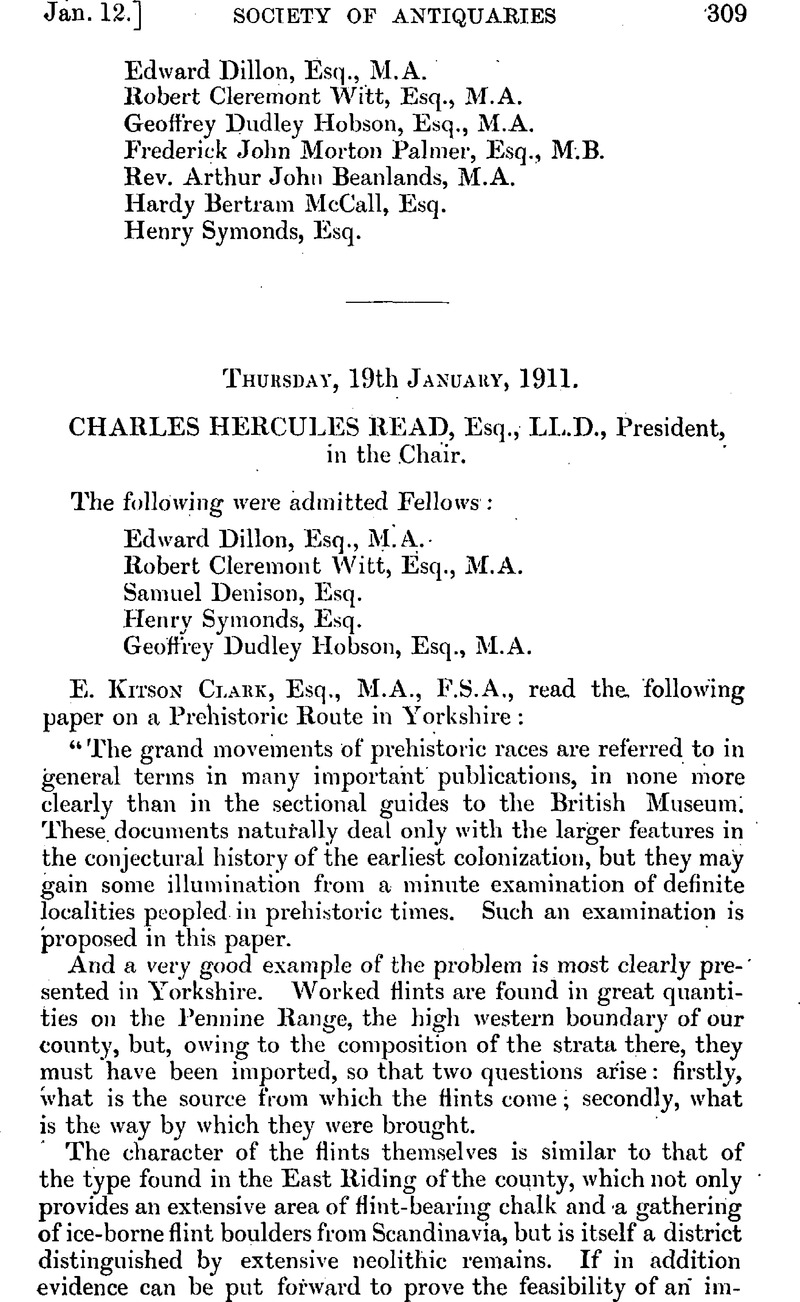No CrossRef data available.
Article contents
Thursday, 19th January, 1911
Published online by Cambridge University Press: 10 May 2010
Abstract

- Type
- Proceedings
- Information
- Copyright
- Copyright © The Society of Antiquaries of London 1911
References
page 310 note 1 There was no sphere for the lake-dweller in this general line.
page 311 note 1 Archaeologiske Undersøgelser, 1878–81, pp. 3–13, ‘Et Træhuus bygget med Redskaber af Steen.’
page 315 note 1 B. M. Bronze Age Guide, 1904, p. 95.
page 317 note 1 A curious confirmation of the semi-sandy nature of the ground is to be found in the existence on the actual line of three separate golf courses.
page 317 note 2 A stone axe has lately been found at a quarry very near this spot: the circumstances of the discovery are genuine and the axe is probably genuine also, but the material, grit, is unsuitable for hard usage.
page 317 note 3 There is a happy infelicity in the name, which denies a route, and proves it, having been taken from a public-house thereon.
page 318 note 1 Forty years' researches in British and Saxon burial-mounds in East Yorks.: A. Brown & Sons.
page 319 note 1 Neolithic Dewponds and Cattle Ways.
page 327 note 1 The peacock is frequently seen with Orpheus.
page 327 note 2 C. M. Kaufmann, Forschungen zur monumentalen Theologie, t. i, Mainz, 1900, p. 24, fig. 5: and F. J. Dölger, ΙΧΘΥС, in the Römische Quartalschrift, 1909 and 1910.
page 328 note 1 Some fragments of Byzantine date are in the Graeco-Roman Basement.
page 328 note 2 It was found at Gamart, the ancient Necropolis.
page 328 note 3 In a catacomb painting of the Baptism of our Lord a stag appears in the foreground, again a reference to the same verse (Ps. xli). The great font basin of the Lateran Baptistery was filled by water which ran from the mouths of silver stags. Doubtless when it was full their noses touched the water and they seemed to drink.
page 329 note 1 I believe its purpose was first pointed out in Lethaby and Swainson's Sancta Sophia, 1894.
page 330 note 1 Proceedings, xxii, p. 231.
page 330 note 2 L. Von Sybel, Christliche Antike, part ii, 1909.
page 333 note 1 The latter part of this communication was not read, owing to the lateness of the hour. Hence no opportunity arose for criticism of the statements contained in it. [Ed.]


